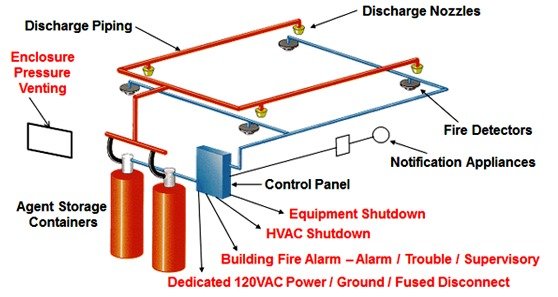A Fire Suppression system suppresses a fire through releasing an agent to either reduce the oxygen, reduce the chemical reaction within the atmosphere or cool the fire.
Once a fire has been detected, by either the manual or automatic detection, a notification is sent to the panel which in turn releases the agent.
Fire sprinkler and fire suppression systems share a common purpose. Parts of their systems may look similar, but fire sprinkler and suppression systems are very different in the way they extinguish or control fires and their applications. There are even several types of fire sprinkler and suppression systems.
The main differences between a fire sprinkler and fire suppression systems are how they extinguish fires and when each system would be ideal to use. Fire sprinklers use water to extinguish and control fires, while fire suppression systems can use a number of different agents. It is important to determine if water from fire sprinklers will cause additional damage to the property before deciding on using a sprinkler or suppression system.
We know from experience that choosing the correct fire suppression system for your organisation can be a bit of a minefield, from knowing why you need one, to which type of system is required and choosing a reliable and trustworthy company to fit it.




